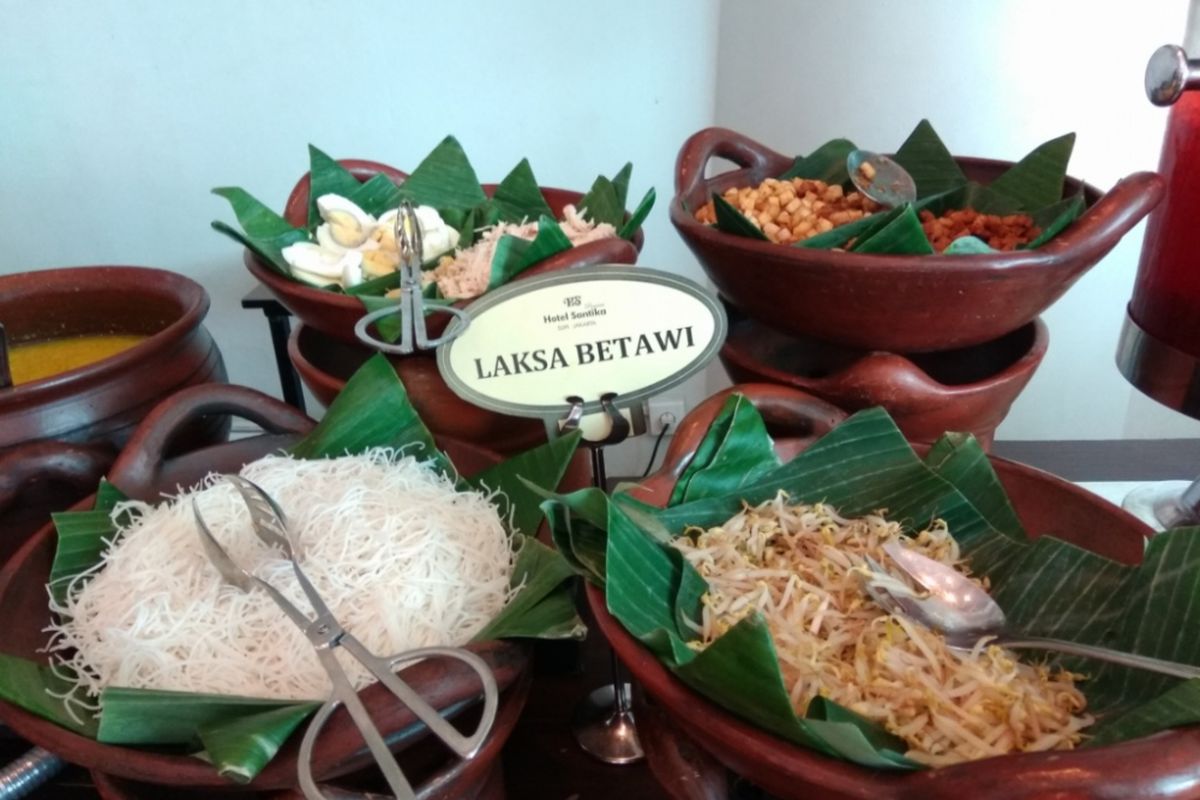Off the Beaten Track: The Underrated Traditional Betawi Cuisine

JAKARTA, KOMPAS.com – The combination of spices and herbs in various Indonesia’s Betawi (native Jakarta) dishes delivers layers of flavors. Its uniqueness, however, does not get enough media mileage even locally and remains little known worldwide.
The only time the dishes become a topic of discussion is when Jakarta celebrates its anniversary, which falls on June 22. The media will run photos and stories on the most popular Betawi dishes in town. Photos of favorite Betawi food will be posted on social media platforms along with the warmest wishes in conjunction with the anniversary.
Betawi cuisine deserves credit for its semur daging or meat stew braised in brown gravy, which is unique on its own. Food lovers can easily find nasi uduk or steamed rice cooked in coconut milk and spices prepared by street peddlers or hotel dining rooms. Also kerak telor, a Betawi version of spicy omelet served by shoulder pole vendors.
Betawi traditional food that is rich in taste has gone through a long process of acculturation. Jakarta, which was known as Batavia during the Dutch colonialism, was the economic center of the archipelago.
Cultural observer Yahya Andi Saputra said that the Sunda Kelapa Port in Batavia played a significant role in trade activity. Many merchants across the archipelago, Asia and Europe came to Batavia through Sunda Kelapa Port.
Also read: Jakarta Discontinues Car Free Day
“Ethnic interaction was strongly developed among nations, especially in the town. The town, which was a melting pot, known as Sunda Kelapa. It was named Jayakarta before it was popularly known as Batavia,” Yahya told Kompas.com on Wednesday, June 17.
The Betawi community at that time had already created their own cuisine, but it was different from what we have now. Their food was influenced by the acculturation between the Betawi people and other ethnic groups in Batavia. The interaction had influenced them in using certain ingredients or cooking techniques.
“They learned from each other how to mix ingredients when making nasi kebuli (rice pilaf), semur, and traditional snacks. For example, they learned to use utensils when mixing the ingredients and no longer with bare hands for hygiene purposes,” he said.
Foreign influence in Betawi dishes
According to the Betawi Cultural Agency's official website, various ethnicities such as the Chinese, Indian, Arab, Portuguese, and Dutch have played a significant influence in Betawi cuisine.
The website cited as an example the acculturation between the Betawi people and the Chinese, which had influenced them in cooking noodles and meatballs. However, the Betawi ethnic who are mostly Moslem replaced pork meat with beef or chicken as pork is prohibited.
Also read: Air Pollution in Jakarta Worsens during New Normal Transition
Other ingredients, it added, such as rice noodle and bean curd were brought by the Chinese and those became important ingredients in soto (noodle soup), ketoprak (vermicelli and vegetables), fried beansprout and many more.
Meanwhile, the Indians who were traders from Gujarat and known as reliable cooks introduced the use of coconut milk, which then became widely used by the Betawi people.
The website also said the Arab people also introduced various spices such as cumin, cardamom, clove, sesame seeds, and ghee. They have influenced the Betawi people in cooking red onion pickles, soto tangkar (broth, meat and vegetable soup), and nasi kebuli, among others.
And the Europeans, it further added, also brought their influences into the Betawi cuisine. The Portuguese introduced the people here to baking and grilling, while the Dutch taught them slow-cooking or smoor in the Dutch language. The Betawi people pronounced it as semur. That’s how the semur daging and semur jengkol (dogfruit) came about. The Dutch also introduced milk, butter, and cheese, among others.
The areas where the Betawi people live have also influenced their dishes or snack preferences.
According to “Kuliner Betawi: Selaksa Rasa & Cerita” or loosely translated as "Betawi Cuisine: Taste & Story", the Betawi community who live in the coastal zone will mostly cook fish-based dishes, while those who live in the city will eat semur (stew) and make cakes and pastries for snacks. These were influenced by the people who migrated to Jakarta as traders.
For the Betawi people who lived on the outskirts of Jakarta, such as Depok, they created new dishes with the local community.
List of favorite Betawi dishes
Here’s a list of favorite Betawi food in the city. Some may also be registered for online food delivery amid the Covid-19 crisis, as people continue to practice physical distancing measures.
1. Rawa Belong, West Jakarta.
The street peddlers and eateries in the area offer nasi uduk, noodle soup, Betawi soup, and various traditional snacks.
2. Betawi Cultural Heritage in Condet
People can find various goodies such as sweet toffee-like confection, snack fruits, and various traditional cakes.
3. Meruya, West Jakarta
Eateries in the area offer Betawi soup and other authentic Betawi food.
4. Setu Babakan Cultural Village
The Betawi people living in the area offer kerak telor (spicy omelet), laksa (rice noodle served in curry soup), and traditional snacks.
5. Pejaten, Jatipadang and Ragunan in Pasar Minggu
Eaterie here serve Betawi soup, meat stew, noodle soup, and pecak chili.
Source: Kompas.com
Simak breaking news dan berita pilihan kami langsung di ponselmu. Pilih saluran andalanmu akses berita Kompas.com WhatsApp Channel : https://www.whatsapp.com/channel/0029VaFPbedBPzjZrk13HO3D. Pastikan kamu sudah install aplikasi WhatsApp ya.






























